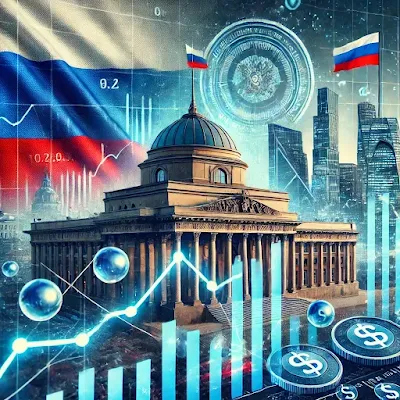Russia Keeps Key Interest Rate at 21%, Defying Expectations
In a surprising move, the Russian Central Bank announced that it will maintain its key interest rate at 21%, contrary to predictions by financial experts. This decision underscores the country's strategy to address persistent inflation while navigating the economic impact of international sanctions and the ongoing geopolitical landscape.
Why the Rate Decision Matters
Efforts to Curb Inflation
Russia has been grappling with high inflation rates, with annualized inflation hovering around 15%. The central bank's decision to hold the interest rate aims to stabilize prices without derailing economic activity.
Market Expectations Defied
Analysts widely expected a hike to 22% or more, given the inflationary pressures and the declining value of the ruble. However, the bank opted for a wait-and-see approach, signaling cautious optimism about the economy's ability to self-correct.
Key Insights from the Central Bank
Statement from Elvira Nabiullina
Sanctions and Economic Pressures
The central bank acknowledged that sanctions imposed by Western nations have added complexity to monetary policy decisions. These measures have disrupted supply chains and increased costs for imported goods, further fueling inflation.
Global and Domestic Reactions
International Perspective
Impact on the Ruble
The ruble has faced continued depreciation against the US dollar, adding pressure on imports and consumer prices. Keeping the interest rate at 21% may not be sufficient to support the currency in the short term.
Domestic Sentiment
Businesses have welcomed the decision as it avoids the immediate financial strain that higher interest rates would impose. However, consumers remain concerned about rising costs and declining purchasing power.
Historical Context
Earlier Rate Hikes
In 2023, the Russian Central Bank implemented several aggressive rate hikes, raising the key interest rate from 8.5% to 21% within months. These measures were aimed at addressing economic instability and rampant inflation triggered by geopolitical tensions.
Inflation Trends
Inflation in Russia has remained volatile, driven by factors such as global commodity price fluctuations and reduced foreign investments due to sanctions.
What’s Next?
Monitoring Economic Indicators
The central bank has signaled its readiness to adjust rates in the future if inflation risks worsen. Key factors to watch include:
- Inflation Trends: A significant rise may necessitate a rate hike.
- Currency Stability: Continued ruble depreciation could force policy changes.
- Global Economic Pressures: Shifts in energy markets and international trade dynamics will play a crucial role.
Long-Term Outlook
While the decision to maintain the rate offers short-term relief to borrowers, the long-term effectiveness in curbing inflation remains uncertain. Analysts expect further adjustments in 2024 as economic conditions evolve.
FAQs on Russia’s Key Interest Rate
1. What is Russia’s current key interest rate?
2. Why did the Central Bank hold the rate steady?
3. How does this affect the ruble?
4. Will the Central Bank raise rates in the future?
5. What are the implications of this decision for global markets?
Conclusion
The Russian Central Bank’s decision to hold its key interest rate at 21% highlights the delicate balance between combating inflation and maintaining economic stability amid geopolitical and financial challenges. While the move defied expert predictions, its long-term success will depend on how effectively the bank navigates inflationary risks and external economic pressures.



Community Rules & Guidelines
1: Do not post email-id or any kind of personal information.
2: Do not post your own blog/website links.
3: For Help & Support use the Contact Us form.